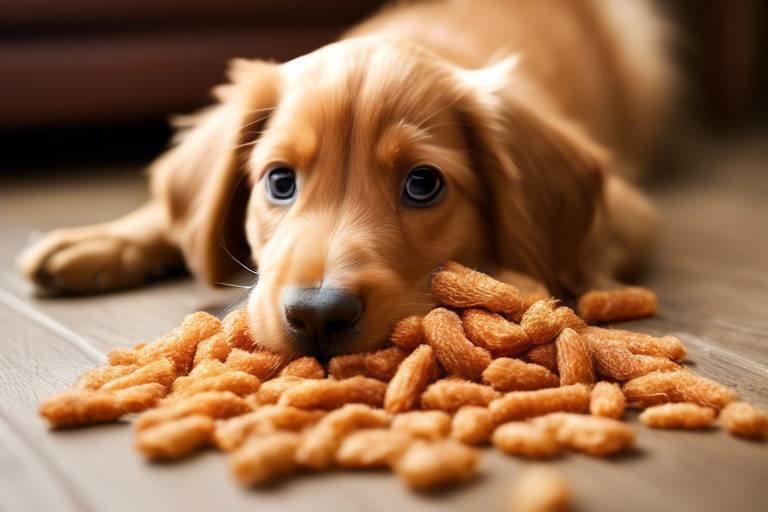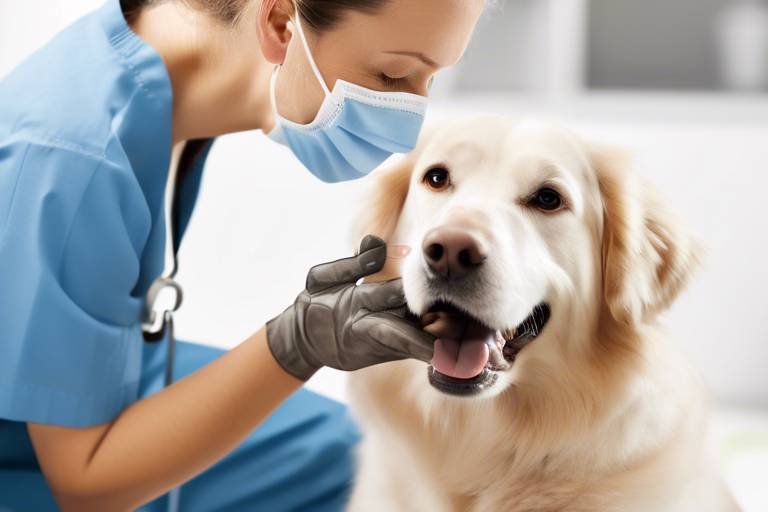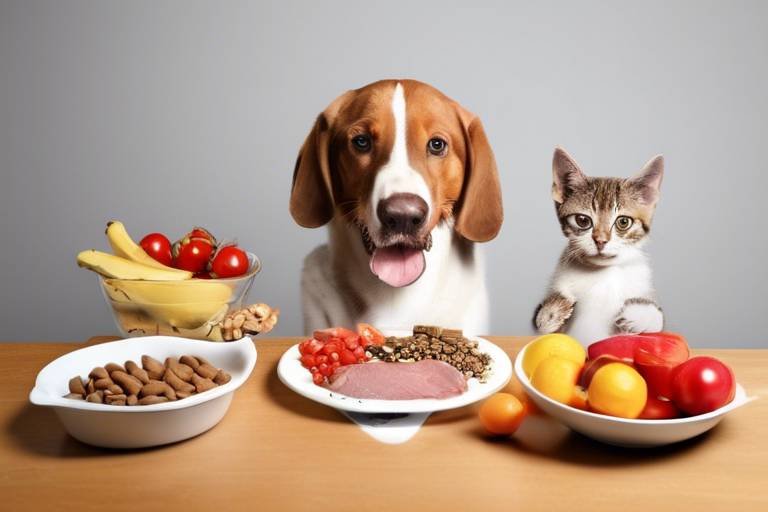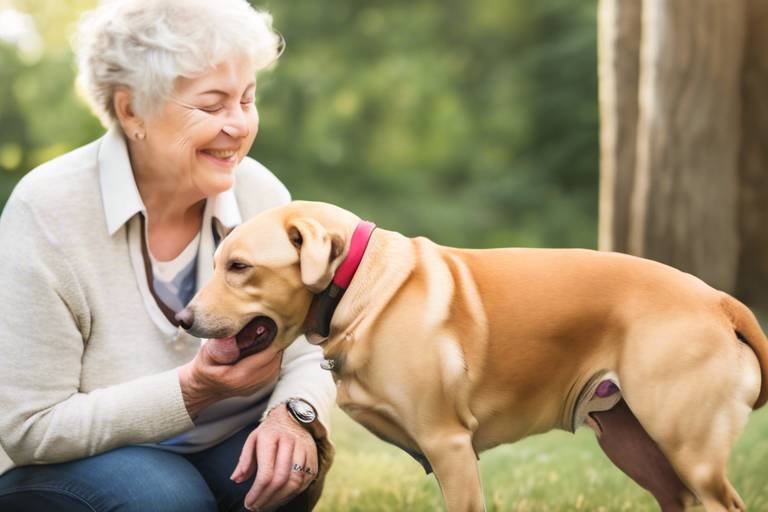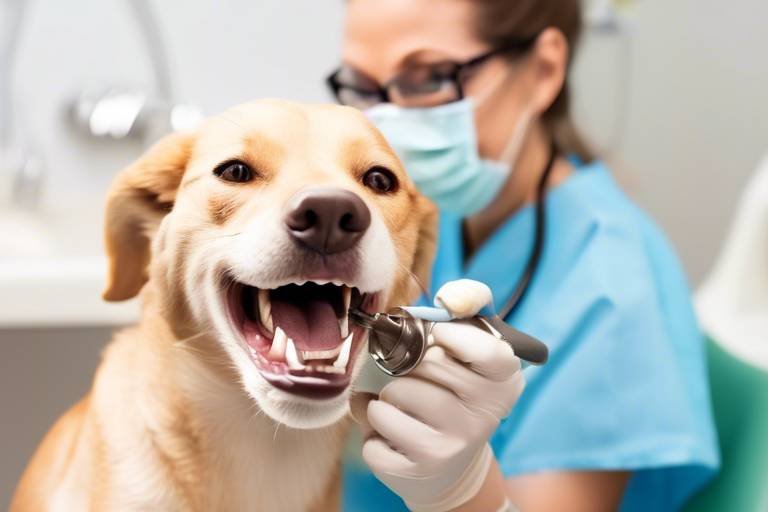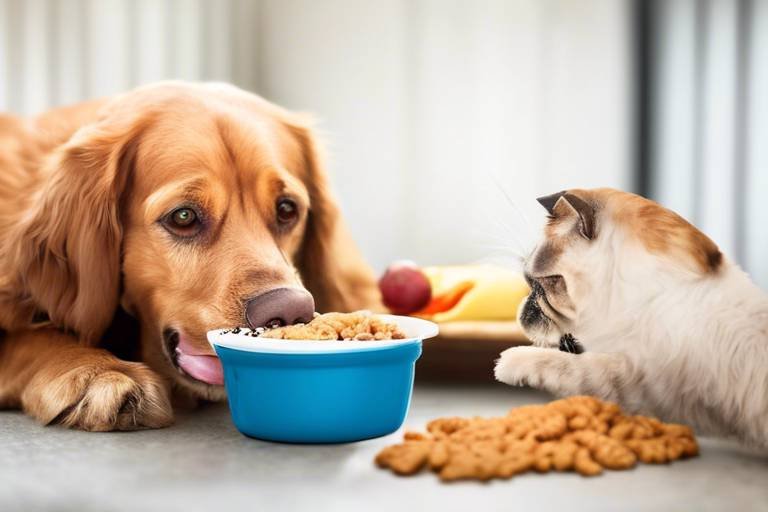The Importance of Safe and Healthy Chew Toys
When it comes to our beloved pets, ensuring their happiness and health is a top priority. One of the simplest yet most effective ways to achieve this is through the use of chew toys. These little wonders are not just playthings; they are essential tools for mental stimulation, stress relief, and overall well-being. Imagine your furry friend, tail wagging, blissfully gnawing on a chew toy, completely absorbed in the moment. It's a sight that warms the heart and reassures us that we are doing right by them.
But why exactly are chew toys so important? For starters, they cater to our pets' natural instincts. Dogs and cats have an inherent need to chew, and providing them with safe and healthy options can help satisfy that urge. Chewing not only keeps them entertained but also plays a crucial role in their dental health. Think of it as a workout for their teeth and gums, helping to reduce plaque and tartar buildup while promoting fresh breath. This is especially vital for pets that may not always be keen on regular dental cleanings.
Moreover, chew toys can serve as a fantastic outlet for stress and anxiety. Just like humans might turn to a stress ball or fidget spinner, pets can find comfort in a good chew toy. Whether it's during a thunderstorm, when they’re left alone, or simply after a long day of play, a chew toy can provide a sense of security and calm. Therefore, investing in the right chew toys is not just about keeping them occupied; it's about enhancing their quality of life.
So, how do you choose the right chew toys for your pet? It’s essential to consider various factors, including size, material, and your pet's chewing habits. A toy that's too small can pose a choking hazard, while one that's too large might not be engaging enough. Additionally, the material of the chew toy matters significantly. You want to avoid anything that could break apart easily or contain harmful chemicals. Always look for toys made from safe, non-toxic materials designed specifically for pets.
In conclusion, safe and healthy chew toys are more than just playthings; they are integral to your pet’s happiness and health. By providing them with the right options, you can help satisfy their natural chewing instincts, promote dental hygiene, and alleviate stress. So the next time you think about what to get for your furry friend, remember that a simple chew toy can make a world of difference!
- What are the best materials for chew toys? Look for toys made from natural rubber, nylon, or specially formulated plastics that are designed to be safe for pets.
- How often should I replace my pet's chew toys? It's best to inspect chew toys regularly for signs of wear and tear. Replace them as soon as they show damage to prevent choking hazards.
- Can chew toys help with my pet's anxiety? Yes! Chew toys can provide a comforting distraction for pets experiencing anxiety or stress.
- Are all chew toys safe for all pets? No, always choose toys that are appropriate for your pet's size and chewing habits to ensure safety.

Understanding Chew Toys
This article discusses the significance of chew toys for pets, focusing on their safety, health benefits, and how to choose the right ones to enhance your pet's well-being.
Chew toys are not just fun little gadgets for your furry friends; they play a vital role in their overall health and happiness. Imagine a world where your pet can engage their minds, relieve stress, and maintain their dental hygiene—all thanks to a simple chew toy! These toys come in various shapes, sizes, and materials, catering to different pet needs and preferences. From rubber bones to plush squeaky toys, there’s something out there for every pet.
When it comes to understanding chew toys, it’s essential to recognize the two main categories they fall into: functional toys and comfort toys. Functional toys are designed specifically for chewing, helping to keep your pet's teeth clean and their gums healthy. On the other hand, comfort toys are more about providing emotional support, often mimicking the feeling of cuddling with another living being. Both types are crucial for a pet's mental and physical well-being.
Moreover, chew toys can serve as a great outlet for your pet’s natural chewing instincts. Dogs, for instance, have an innate desire to chew, and without appropriate outlets, they may turn to your favorite pair of shoes or the corner of your couch! By providing them with a variety of chew toys, you not only protect your belongings but also give your pet a healthy way to express this natural behavior.
Let’s break down some of the common types of chew toys available:
- Rubber Chew Toys: Durable and often filled with treats, these toys can withstand heavy chewing.
- Dental Chew Toys: Specifically designed to promote oral health, these toys often have textures that help clean teeth.
- Soft Plush Toys: Ideal for comfort, these toys may have squeakers that engage your pet’s interest while providing a soft cuddle buddy.
- Rawhide Chews: A classic choice, but they should be given with caution due to potential choking hazards.
Understanding the different types of chew toys available can help you choose the right one for your pet. Remember, the best chew toys are those that not only entertain but also promote health and well-being. So, next time you’re at the pet store, take a moment to consider what your furry friend might need. Are they more of a chewer or a cuddler? Do they need something tough to withstand their powerful jaws, or are they looking for a comforting companion?
In conclusion, chew toys are more than just playthings; they are essential tools in keeping your pet happy, healthy, and engaged. So, make sure to invest in quality chew toys that cater to your pet's specific needs. After all, a happy pet makes for a happy home!
Here are some common questions pet owners have about chew toys:
- How often should I replace my pet's chew toys? - It's a good practice to inspect chew toys regularly and replace them if they show signs of wear and tear.
- Are there any chew toys I should avoid? - Yes, avoid toys made from toxic materials or those that are too small and could be a choking hazard.
- Can chew toys help with separation anxiety? - Absolutely! Chew toys can provide comfort and distraction for pets who experience anxiety when left alone.
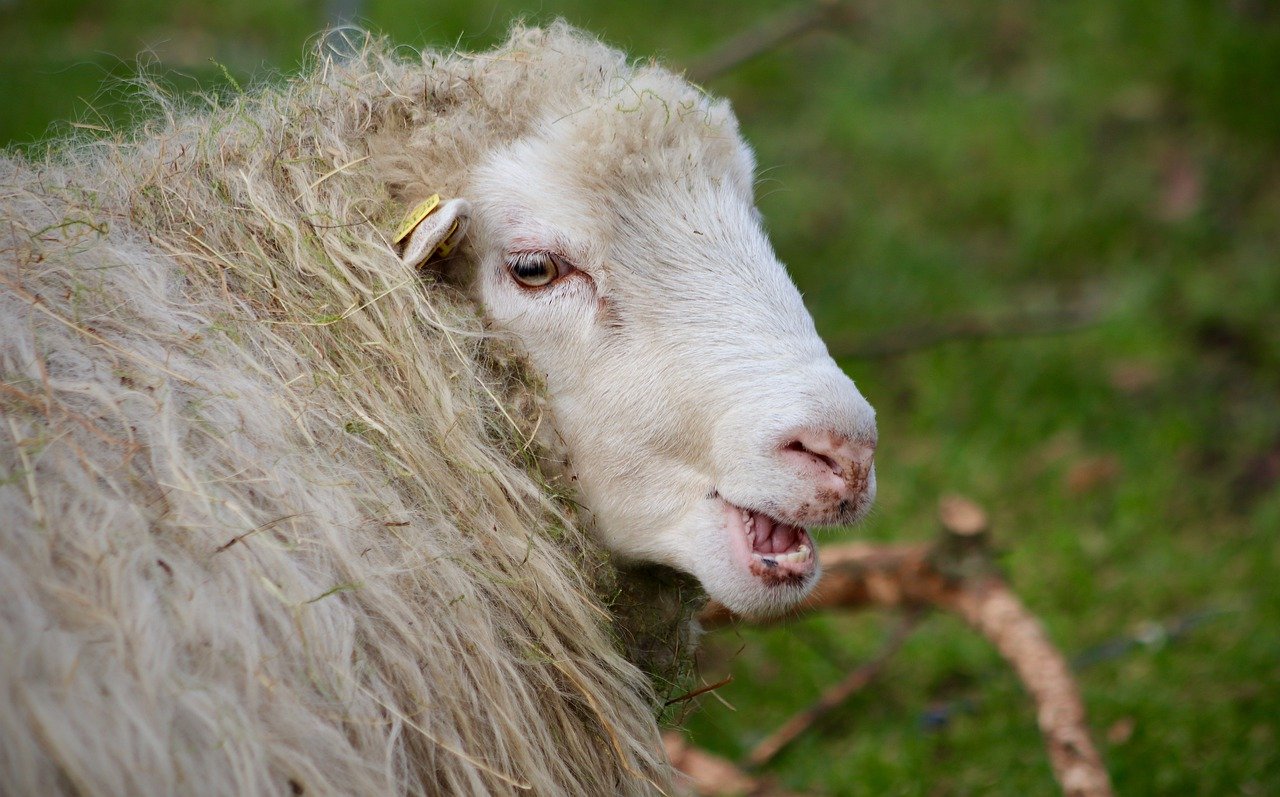
Benefits of Chewing
Chewing is not just a pastime for our furry friends; it’s a fundamental behavior that offers a plethora of benefits for their overall well-being. When pets engage in chewing, they are not only satisfying their natural instincts but also reaping significant health advantages. Imagine a dog gnawing on a rubber bone or a cat batting around a soft chew toy; these actions are more than mere play—they are vital to their health and happiness.
One of the most notable benefits of chewing is stress relief. Much like how humans might chew gum or munch on snacks when feeling anxious, pets also find comfort in chewing. It serves as an outlet for pent-up energy and can help alleviate feelings of boredom or anxiety. For instance, when dogs are left alone for extended periods, they may become anxious, leading to destructive behaviors. Providing them with a safe chew toy can redirect that energy positively, keeping them occupied and content.
Moreover, chewing plays a crucial role in maintaining dental hygiene. Just like brushing your teeth helps prevent cavities, chewing can reduce plaque and tartar buildup on pets' teeth. This is where the right chew toys come into play. Many toys are specifically designed to promote oral health, featuring textures that help scrub away debris while your pet enjoys a satisfying chew. In fact, studies have shown that regular chewing can lead to a significant improvement in dental health, which is essential for preventing more serious health issues down the line.
Here’s a quick overview of how chewing benefits pets:
- Reduces stress and anxiety: Chewing can calm pets, helping them cope with separation and other stressors.
- Improves dental health: Chewing helps clean teeth and gums, reducing the risk of dental diseases.
- Provides mental stimulation: Engaging with chew toys can keep pets mentally sharp and entertained.
- Promotes healthy chewing habits: Regular chewing can prevent destructive behaviors associated with boredom.
In addition to these benefits, chewing also fosters a stronger bond between pets and their owners. Engaging in playtime that includes chew toys can create shared experiences that enhance trust and companionship. As you watch your pet gleefully gnawing away, it’s not just a moment of joy; it’s a testament to the healthy relationship you are nurturing.
In summary, the benefits of chewing extend far beyond simple enjoyment. It’s a natural behavior that supports mental and physical health, making it essential for every pet owner to provide appropriate chew toys. By understanding and embracing this aspect of your pet's life, you can contribute positively to their overall well-being.
Q: How often should my pet have access to chew toys?
A: It’s beneficial for pets to have access to chew toys at all times, especially if they are prone to anxiety or boredom. Regular chewing can help keep them calm and entertained.
Q: Are all chew toys safe for my pet?
A: No, not all chew toys are created equal. Always check for safety ratings and materials used in chew toys to ensure they are non-toxic and appropriate for your pet's size and chewing strength.
Q: Can chewing too much be harmful to my pet?
A: While chewing is generally beneficial, excessive chewing can lead to dental issues or gastrointestinal problems if large pieces are ingested. Monitor your pet's chewing habits and consult a veterinarian if you have concerns.
Dental Health
When it comes to our furry friends, is often an overlooked aspect of their overall well-being. Just like humans, pets can suffer from a range of dental issues, including plaque buildup, gum disease, and bad breath. That's where chew toys come into play! These delightful little gadgets not only entertain our pets but also serve a crucial role in maintaining their oral hygiene. By encouraging chewing, these toys help to scrape away plaque and reduce tartar buildup, leading to healthier gums and fresher breath.
Imagine your pet's mouth as a little ecosystem. In this ecosystem, bacteria can thrive and multiply if not properly managed. Chew toys act as a natural toothbrush, disrupting the growth of harmful bacteria while promoting a healthy balance. When your pet gnaws on these toys, they are not just having fun; they are engaging in a behavior that supports their dental hygiene. It’s a win-win situation!
Different types of chew toys cater to various dental needs, and understanding these can help you choose the best one for your pet. Here are a few types of dental chew toys that can significantly enhance your pet's oral care routine:
- Rubber Chew Toys: Durable and flexible, rubber toys can withstand vigorous chewing while effectively cleaning teeth.
- Dental Chews: These treats are specifically designed to be chewed, often containing ingredients that promote oral health.
- Rawhide Chews: While they can be controversial, some pets benefit from rawhide as it can help remove plaque when chewed properly.
- Interactive Chew Toys: Toys that dispense treats can keep your pet engaged while also promoting dental health.
By incorporating these dental chew toys into your pet's daily routine, you can help ensure they maintain a healthy mouth. Regular chewing not only helps with dental health but also keeps your pet entertained, reducing the likelihood of destructive behaviors born out of boredom. Remember, a happy pet is a healthy pet!
In summary, investing in quality chew toys is not just about fun and games; it's about taking proactive steps toward your pet's dental health. Regular chewing can lead to a significant reduction in dental issues, paving the way for a happier and healthier life for your beloved companion.
1. How often should I give my pet a chew toy?
It's a good idea to offer chew toys regularly, ensuring your pet has access to them daily. Rotate the toys to keep things interesting!
2. Can chew toys replace regular dental care?
While chew toys are beneficial, they should complement regular dental care, including brushing your pet's teeth and routine vet check-ups.
3. Are all chew toys safe for my pet?
Not all chew toys are created equal. Always look for toys made from safe, non-toxic materials and avoid those that could break into small, swallowable pieces.
4. How do I know if a chew toy is effective for dental health?
Choose toys designed specifically for dental health, and observe your pet's chewing behavior. If they seem to enjoy it and their breath improves, it's likely effective!
Types of Dental Chew Toys
When it comes to dental chew toys, variety is the spice of life! Just like humans, pets have different preferences and needs, so having a range of options can make all the difference in keeping their teeth healthy and their minds engaged. Dental chew toys are specifically designed to promote oral health while also providing the satisfying resistance that pets crave. Here’s a closer look at some popular types of dental chew toys that can help keep your furry friend’s smile bright and clean.
First up, we have rubber chew toys. These are often made from durable, non-toxic rubber that can withstand vigorous chewing. Rubber toys are not only great for cleaning teeth but also for massaging gums. Their bouncy nature adds an element of fun, making playtime enjoyable while also serving a purpose. Look for those with textured surfaces, as they can help scrape away plaque and tartar effectively.
Next, we can't forget about nylon bones. These hard, long-lasting chew toys are perfect for aggressive chewers. They come in various flavors and sizes, so you can find one that fits your pet's taste and chewing strength. Nylon bones are excellent for reducing plaque buildup, but be sure to supervise your pet while they chew, as small pieces can break off.
Dental chews are another fantastic option. These are edible treats specifically designed to promote dental health. They often have a unique texture that helps reduce plaque and tartar while freshening breath. However, it’s essential to choose chews that are appropriate for your pet’s size and chewing habits. Some dental chews are softer, while others are more challenging, so select wisely based on your pet's chewing style.
For pets who love to chew but need something a bit softer, fabric or rope toys can also be beneficial. These toys can help clean teeth through the act of chewing and tugging. The fibers can act like dental floss, helping to remove food particles and plaque. Just make sure to choose high-quality, tightly woven fabric to avoid fraying and ingestion risks.
Lastly, there are interactive dental toys. These are designed to engage your pet's mind while promoting dental health. They often have compartments for treats or require your pet to solve puzzles to access their rewards. This type of toy not only keeps their teeth clean but also combats boredom, making it a win-win situation!
In summary, when selecting dental chew toys for your pet, consider their chewing style, preferences, and any specific dental needs they may have. The right toy can make dental care fun and effective, ensuring your furry friend enjoys a lifetime of healthy teeth and gums. Remember, a happy pet is a healthy pet!
- How often should I give my pet dental chew toys?
It's best to incorporate dental chew toys into your pet's daily routine. Supervise their chewing sessions to ensure they are safe and effective. - Are all dental chew toys safe for my pet?
Not all chew toys are created equal. Always choose toys made from non-toxic materials and appropriate for your pet's size and chewing habits. - Can dental chew toys replace regular vet dental check-ups?
While dental chew toys can significantly improve oral health, they should complement regular vet check-ups and professional cleanings.
How to Choose Dental Toys
Choosing the right dental chew toy for your furry friend is more than just picking something that looks cute. It’s about ensuring that the toy meets your pet’s specific needs and promotes their overall health. First and foremost, consider the size of the toy. A toy that’s too small can pose a choking hazard, while one that’s too large may not be comfortable for your pet to chew. Always opt for a size that fits comfortably in your pet’s mouth, allowing them to chew without any strain.
Next, think about the material of the toy. Safe materials are crucial for your pet's health. Look for toys made from durable rubber, nylon, or natural materials like wood. These materials not only withstand vigorous chewing but also help to clean your pet's teeth effectively. Avoid toys made from cheap plastics or those that contain harmful chemicals, as they can lead to serious health issues.
Another important factor is your pet’s chewing style. Some pets are gentle chewers, while others are aggressive chewers. If your pet tends to destroy toys quickly, you’ll need to invest in ultra-durable options specifically designed for heavy chewers. On the other hand, if your pet is more of a gentle chewer, softer toys might be suitable. Observing your pet's chewing habits can provide valuable insights into what will work best for them.
Additionally, consider your pet’s preferences. Just like humans, pets have their own likes and dislikes. Some dogs prefer toys that squeak, while others might enjoy a textured surface. Pay attention to what excites your pet and choose toys that align with their preferences. This will not only keep them engaged but also encourage them to chew more effectively, enhancing their dental health.
Finally, always keep an eye on the condition of the toy. Regularly inspect it for any signs of wear and tear. If you notice any pieces breaking off or if the toy becomes too worn, it’s time to replace it. A damaged toy can pose choking hazards or lead to digestive issues if ingested. Remember, a proactive approach to toy maintenance is key to ensuring your pet's safety and health.
In summary, when choosing dental toys for your pet, focus on size, material, chewing style, preferences, and maintenance. By taking these factors into account, you can select toys that not only keep your pet entertained but also contribute to their dental hygiene and overall well-being.
- What should I look for in a dental chew toy? Look for size, material, and your pet's chewing style and preferences.
- Are all chew toys safe for my pet? No, always check for harmful materials and inspect toys regularly for wear and tear.
- How often should I replace my pet's chew toys? Replace them as soon as you notice any damage or wear to ensure your pet's safety.
Behavioral Benefits
Chewing is not just a pastime for our furry friends; it's a fundamental aspect of their behavior that can significantly affect their overall well-being. When pets chew on toys, they engage in a natural instinct that helps alleviate various behavioral issues. For instance, chewing can be a powerful tool in combating anxiety. Think about it: just like how humans might chew gum or snack to relieve stress, pets find comfort in gnawing on their favorite toys. This simple act can provide a sense of security and calm, especially during stressful situations like thunderstorms or when left alone.
Moreover, chew toys can effectively reduce boredom, which is a common trigger for destructive behaviors. Pets, much like children, need stimulation to keep their minds engaged. When they lack activities, they may resort to chewing on furniture or shoes, which can be frustrating for pet owners. By providing a variety of chew toys, you can redirect that energy towards something safe and enjoyable. Imagine giving your dog a durable rubber toy filled with treats; not only does it keep them busy, but it also satisfies their natural urge to chew.
In addition to anxiety and boredom, chew toys can also help with behavioral training. For instance, if your pet tends to bite or nip when excited, offering them a chew toy can serve as a constructive outlet for that energy. Instead of redirecting their excitement towards your hands or furniture, they learn to focus on their toy. This positive reinforcement can lead to better behavior over time, creating a more harmonious environment for both you and your pet.
It's essential to note that not all chew toys are created equal when it comes to behavioral benefits. Some toys are designed with specific features that can enhance their effectiveness. For example, toys that squeak or have varying textures can stimulate a pet's curiosity and keep them engaged longer. Additionally, interactive toys that require problem-solving can provide mental stimulation, further reducing anxiety and boredom.
In summary, chew toys play a crucial role in addressing various behavioral issues in pets. They provide comfort, reduce boredom, and can even assist in training. By understanding the importance of these toys and selecting the right ones, you can greatly enhance your pet's quality of life. So, the next time you're shopping for chew toys, remember that you're not just buying a toy—you're investing in your pet's happiness and well-being.
- What types of chew toys are best for my pet? Look for durable materials that suit your pet's chewing style. Rubber toys are great for tough chewers, while softer toys may be suitable for gentle chewers.
- How often should I replace my pet's chew toys? Regularly inspect chew toys for wear and tear. Replace them when they become damaged to prevent your pet from ingesting harmful pieces.
- Can chew toys help with my pet's dental health? Yes! Many chew toys are designed specifically to promote dental hygiene by reducing plaque and tartar buildup.
- Are there any materials I should avoid? Yes, steer clear of toys made from toxic materials like certain plastics, as well as those with small parts that could pose a choking hazard.
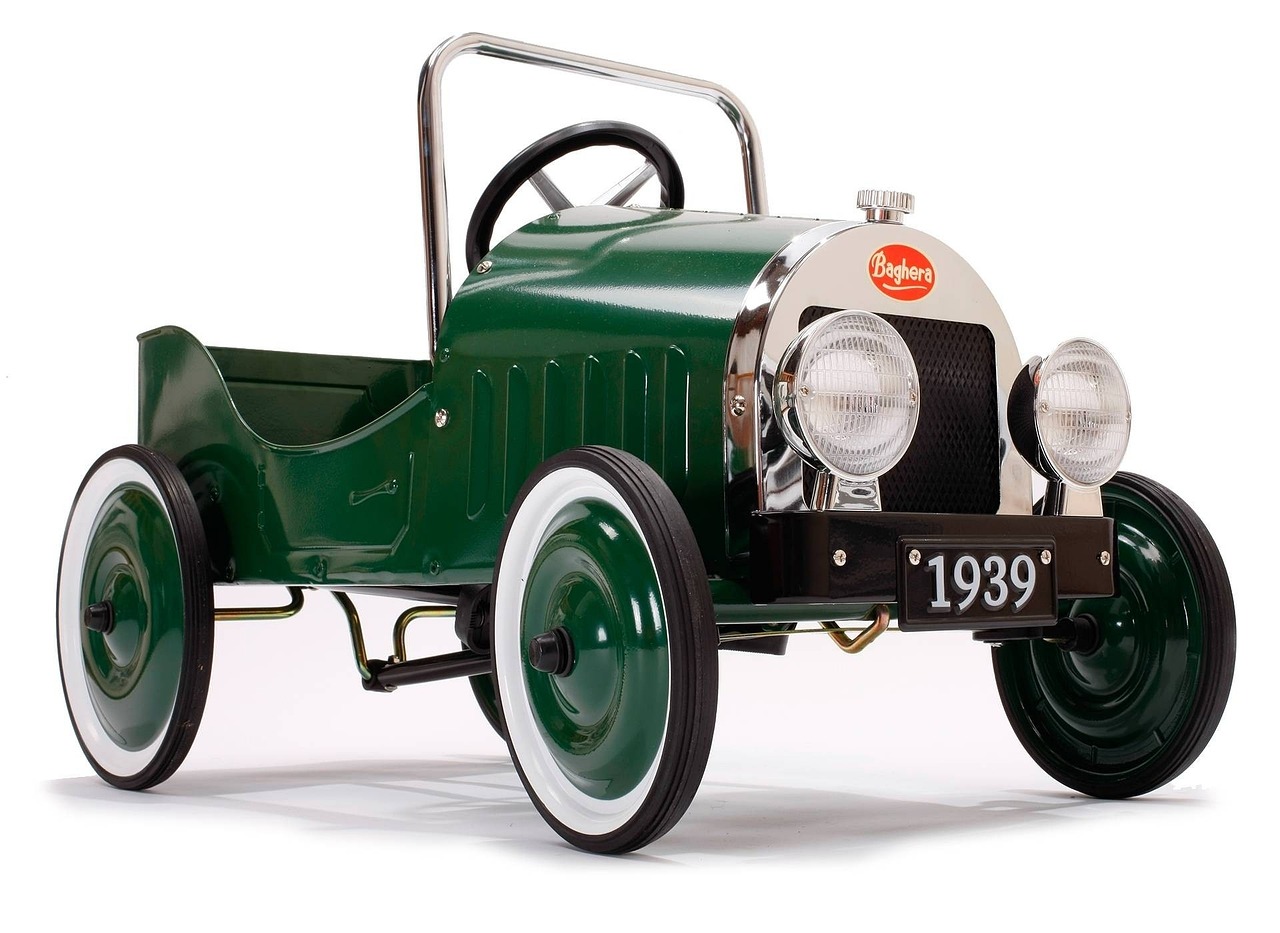
Material Safety
When it comes to your beloved pets, ensuring their safety is a top priority, especially regarding the toys they chew on. Not all chew toys are created equal; some materials can pose serious risks to your furry friends. It's essential to understand what makes a chew toy safe and what could potentially harm your pet. Think of chew toys as the food we give our pets – just as we wouldn't feed them something harmful, we shouldn't let them chew on unsafe materials.
Safe chew toys can provide hours of enjoyment, but they can also serve a critical role in your pet's health. For instance, many chew toys are made from rubber, nylon, or natural materials like wood, which are generally considered safe. However, some toys may contain harmful substances such as phthalates, lead, or other toxic chemicals. Always check the labels and do your research before making a purchase. Here’s a quick breakdown of materials you should look for and those to avoid:
| Material | Safety Status | Notes |
|---|---|---|
| Natural Rubber | Safe | Durable and flexible, great for aggressive chewers. |
| Nylon | Safe | Long-lasting but can splinter; supervise your pet. |
| Wood (specifically designed for pets) | Safe | Natural chewing experience, but ensure it’s pet-safe wood. |
| Plastic | Variable | Some plastics can contain harmful chemicals; check for safety certifications. |
| Vinyl | Unsafe | Can contain toxic chemicals; best avoided. |
It's not just about the material; the construction of the toy also matters. Toys with small parts can present choking hazards, while those that break easily can lead to ingestion of harmful pieces. Always choose toys that are appropriate for your pet's size and chewing strength. A toy that is too small for a large dog can easily be swallowed, while a toy that is too tough for a small dog can lead to dental damage.
Additionally, keep an eye out for signs of wear and tear. If a toy starts to break down, it’s time to replace it. Regularly inspecting chew toys can help prevent potential health issues. It’s just like checking a child’s toys – you want to ensure everything is safe and sound. Remember, a little vigilance goes a long way in keeping your pet happy and healthy!
In summary, choosing the right materials for your pet's chew toys is crucial for their safety. By being proactive and informed, you can ensure that playtime remains a fun and safe experience for your furry friend.
Identifying Safe Materials
When it comes to choosing the right chew toys for your furry friend, material safety should be at the top of your priority list. Just like we wouldn't give our children toys made from harmful substances, our pets deserve the same level of care. So, what materials should you look for? Let's break it down.
First and foremost, natural rubber is a fantastic option. It's durable, flexible, and safe for pets to chew on. This material not only provides a satisfying texture for your pet but also ensures that they won't be ingesting any harmful chemicals. Similarly, nylon is another popular choice. It's tough enough to withstand aggressive chewers while being non-toxic. However, always ensure that the nylon is specifically designed for pets, as some industrial-grade nylons can be unsafe.
Then we have natural fibers, like cotton or jute, which are great for softer toys. These materials are biodegradable and generally safe for pets, although they may not be as long-lasting as rubber or nylon. If your pet loves to chew on plush toys, look for those filled with organic materials instead of synthetic stuffing. This not only keeps your pet safe but also minimizes environmental impact.
On the flip side, there are materials you should steer clear of. For instance, polyvinyl chloride (PVC) is a common plastic found in many toys but can be harmful due to the chemicals it contains. Similarly, lead-based paints and other toxic substances can be found in cheaper toys, posing a serious risk to your pet's health. Always check for labels that indicate the toy is made from safe, pet-friendly materials.
To help you make informed decisions, here's a simple table summarizing safe and unsafe materials:
| Material | Safety Status |
|---|---|
| Natural Rubber | Safe |
| Nylon (Pet-Safe) | Safe |
| Natural Fibers (Cotton, Jute) | Safe |
| PVC | Unsafe |
| Lead-Based Paints | Unsafe |
In summary, knowing how to identify safe materials for chew toys is crucial for your pet's health and happiness. By opting for toys made from natural rubber, nylon, or natural fibers, you can ensure that your furry friend enjoys their chew time without any risks. Always read labels and do your research, because a little effort goes a long way in keeping your pet safe!
- What are the safest materials for chew toys? Natural rubber, nylon (specifically designed for pets), and natural fibers like cotton and jute are generally safe options.
- How can I tell if a chew toy is safe? Look for labels indicating non-toxic materials and avoid toys made from PVC or those with lead-based paints.
- Should I supervise my pet while they chew? Yes, it's always a good idea to supervise your pet, especially with new toys, to ensure they do not ingest any parts.
- How often should I replace chew toys? Regularly inspect chew toys for wear and tear. Replace them as soon as they show signs of damage to prevent choking hazards.
Risks of Unsafe Toys
When it comes to our beloved furry friends, safety should always be the top priority. Unfortunately, not all chew toys are created equal, and some can pose significant risks to your pet's health. Imagine giving your dog a toy that seems harmless, only to find out it contains toxic materials or is poorly constructed. This can lead to serious health issues, and in some cases, even life-threatening situations. So, what exactly are the risks associated with unsafe chew toys?
First and foremost, one of the biggest dangers is the risk of choking. Pets are notorious for chewing on toys and, in their enthusiasm, they might break off small pieces that can get lodged in their throats. This is especially concerning for smaller breeds, where even a tiny fragment can cause a choking hazard. Additionally, some toys are made with hard materials that can crack or splinter, creating sharp edges that can injure your pet's mouth or digestive tract.
Another significant risk comes from toxic materials. Many cheaper chew toys are made from plastics that can leach harmful chemicals, such as phthalates or BPA, into your pet’s system. Over time, exposure to these substances can lead to serious health problems, including hormonal disruptions and even cancer. Always check for safety certifications and materials used in the toys you choose for your pet.
Furthermore, some chew toys are designed with small parts that can easily break off. These parts can not only pose a choking hazard but can also lead to intestinal blockages if ingested. Symptoms of such blockages can include vomiting, lethargy, and abdominal pain, which can require emergency veterinary intervention. It’s essential to choose toys that are durable and specifically designed for your pet’s size and chewing habits.
To help you make informed choices, here’s a quick overview of the most common risks associated with unsafe chew toys:
| Risk | Description |
|---|---|
| Choking Hazard | Small pieces can break off and get lodged in your pet's throat. |
| Toxic Materials | Some toys may contain harmful chemicals that can leach into your pet's system. |
| Intestinal Blockages | Ingesting small parts can cause blockages requiring emergency care. |
In conclusion, while chew toys are a fantastic way to keep our pets entertained and healthy, it’s critical to remain vigilant about the safety of the toys we provide. Always opt for high-quality products, and don’t hesitate to read reviews or consult your veterinarian if you’re unsure about a specific toy. After all, our pets rely on us to keep them safe, and the right chew toy can make all the difference in their happiness and well-being.
- What materials should I avoid in chew toys? Look out for toys made from cheap plastics, rubber, or any materials that are not labeled as pet-safe.
- How can I tell if a chew toy is safe? Always check for safety certifications and read reviews from other pet owners.
- What are some signs my pet may have ingested a harmful toy? Watch for symptoms like vomiting, lethargy, or signs of distress, and consult your vet immediately if you notice any of these.
Frequently Asked Questions
- What are chew toys and why are they important for pets?
Chew toys are specially designed items that pets can gnaw on. They are crucial for pets because they provide mental stimulation, help relieve boredom, and promote dental health by reducing plaque and tartar buildup. Think of them as a fun workout for your pet's mouth!
- How do chew toys benefit my pet's dental health?
Chewing on toys can significantly enhance your pet's oral hygiene. As they chew, the friction helps scrape away plaque and tartar, leading to healthier gums and teeth. It's like giving your pet a toothbrush that they actually enjoy using!
- What types of materials are safe for chew toys?
Safe chew toys are typically made from non-toxic materials like rubber, nylon, and certain types of fabric. Always look for toys labeled as pet-safe and free from harmful chemicals. Avoid toys made from hard materials that could break teeth or those that contain toxic substances.
- How can I choose the right chew toy for my pet?
When selecting a chew toy, consider your pet's size, chewing style, and preferences. For example, a strong chewer may need a tougher toy, while a gentle chewer might enjoy something softer. Always supervise your pet during playtime to ensure safety!
- What are the risks of using unsafe chew toys?
Unsafe chew toys can pose serious health risks, including choking hazards, broken teeth, and exposure to toxic materials. It's essential to choose high-quality toys specifically designed for pets to avoid these dangers. Remember, not all toys are created equal!
- Can chew toys help with my pet's behavioral issues?
Absolutely! Chew toys can be a great way to alleviate anxiety and boredom in pets. They can keep your furry friend engaged and distracted, reducing destructive behaviors. Think of them as a calming tool that promotes positive behavior!



